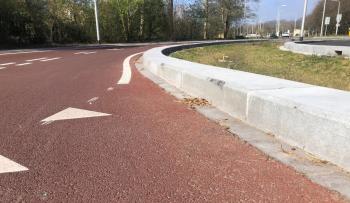
Road safety: Safe lateral passing distances
In this article, we take a look at one of the most commonly experienced road safety issues for cyclists. We give a brief overview of what countries are doing to prevent close passes and what more needs to be done.
For cyclists, being overtaken too close for comfort by a motorist is unfortunately a common, if not daily, occurrence. Apart from being a scary experience for the cyclist that contributes to people thinking twice before hopping on their bike, this behaviour also poses a grave risk of accidents that get significantly more severe as speeds get higher.
What are countries doing?
Some countries have tried to counteract this frequent phenomenon by passing safe lateral passing distance laws. These provisions can usually be found in highway codes.
The concrete approach varies from country to country. For example, Ireland punishes the endangerment of cyclists (suggesting that ths endangerment means 1m under 50km/h and 1.5m over). Some highway codes require different distances based on whether the manoeuvre takes place in a town or not, acknowledging the greater danger for cyclists at higher speeds. Belgium prescribes only 1 m in towns and 1.5 m outside of them, while Germany requires a more generous 1.5 m in towns, and 2 m outside. The most commonly used distance in national highway codes is 1.5 m.
The consequences for breaking the law also vary from country to country and case by case. In Germany, drivers are commonly fined only €30, €80 if endangering vulnerable groups. Careless drivers in the UK are usually fined about £100 (about €115) – but in exceptional cases, they may be fined up to £5,000 pounds (about €5,850). In countries that employ a points system for driving infractions, such as Germany and the UK, drivers are often also threatened with a varying amount of points in the register.
The issue of enforcement
Even if there is no doubt as to whether the letter of the law seeks to protect cyclists, uncertainties and deficits in enforcement remain. Some police forces have employed creative solutions, like riding a bicycle themselves and stopping drivers that fail to respect the safe minimum distance. But more often than not, welcome and necessary changes to the law have little effect because local police do not make the enforcement of cyclist safety a priority. Following a change in policy, activist groups in Austria have taken matters into their own hands and started measuring lateral distances themselves. The results are discouraging, but they confirm what many cyclists already know from experience: Two thirds of drivers do not keep the legally mandated distance when overtaking.
At EU level, the Cross Border Enforcement Directive is currently being reviewed. This directive enables the exchange of information between Member States regarding traffic offences committed with vehicles registered in another Member State. Put simply, it means that offences “follow the offender home”, and they receive their fine or points incurred in another member state at home. Currently the directive covers offences like speeding and drink driving, but the European Commission wants to include “dangerous overtaking” in the future. This should of course also include dangerous overtaking of cyclists.
What is to be done?
In many countries in Europe and worldwide, there are no minimum overtaking laws at all and the legislative situation still leaves much to be desired for the adequate protection of cyclists.
Legislation must then also be accompanied by corresponding enforcement action that drives home the point that failure to comply is not a trivial offense, but a matter of life or death for the cyclist. One interesting tool could beallowing user uploaded video evidence, as a way to to report and prosecute cases of dangerous overtaking.
Of course, ideally, drivers should be educated on the importance of safely passing cyclists before they even get their license – here there is also a European dimension. The Driving License Directive is being updated at the moment, as well. ECF is of the opinion that overtaking cyclists should be a particular skill learnt if taking a driving test, which we will be attempting to include in the new legislation. The key message for drivers is this: If the safe distance cannot be kept, they are not to overtake at all.
Regions:
Contact the author
Recent news!
Upcoming events
Contact Us
Avenue des Arts, 7-8
Postal address: Rue de la Charité, 22
1210 Brussels, Belgium









